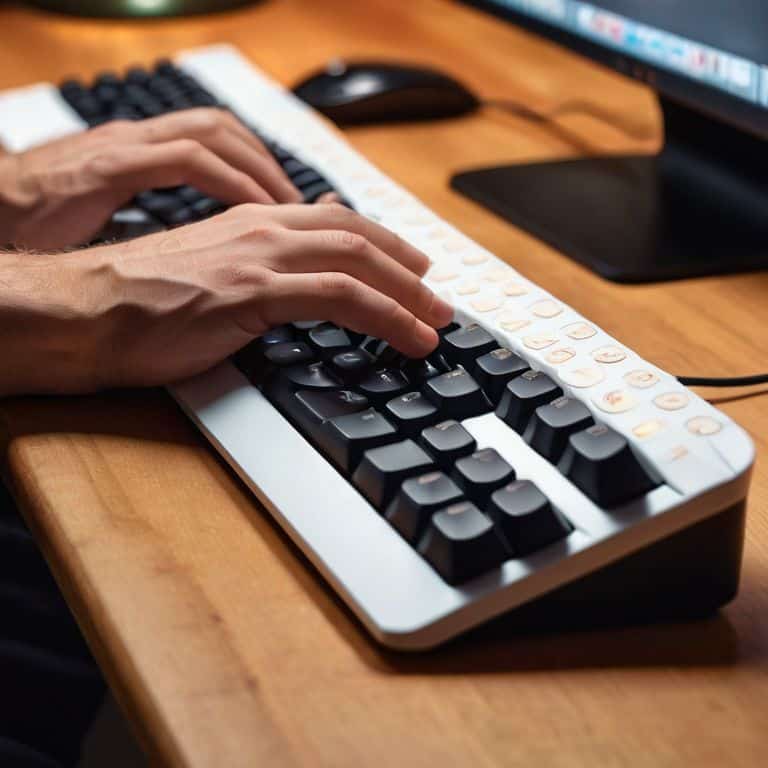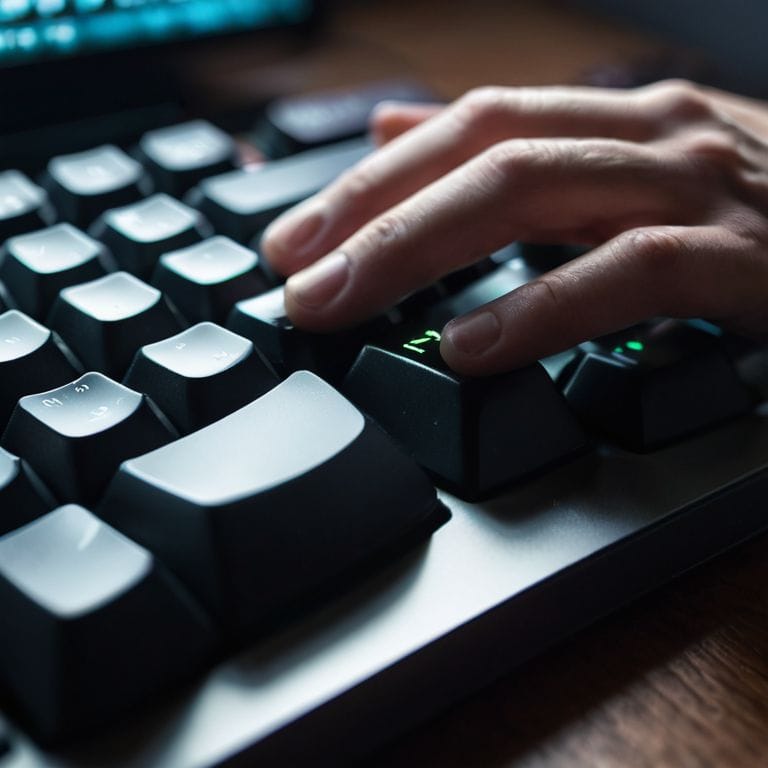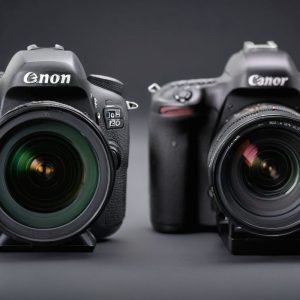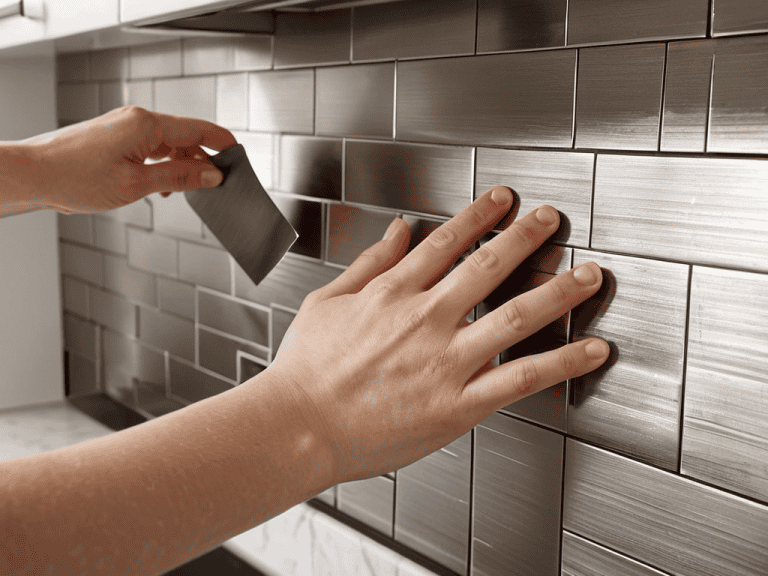I still remember the day I decided to ditch my boring, mass-produced keyboard and build something that’s truly mine – a custom mechanical keyboard that’s tailored to my unique needs and style. It was a game-changer, and I’m excited to share my journey with you in this a guide to custom mechanical keyboards. For too long, we’ve been told that our tech should be sleek, sealed, and impossible to repair or modify. But I believe that’s a myth – with the right tools and knowledge, anyone can create their own custom mechanical keyboard that’s not only functional but also reflects their personality.
In this article, I’ll take you through the step-by-step process of building your dream keyboard, from choosing the right switches and keycaps to assembling and programming your new device. You’ll get honest, no-hype advice on what works and what doesn’t, as well as tips on how to avoid common mistakes and troubleshoot any issues that may arise. By the end of this guide, you’ll have the confidence to void that warranty and create something that’s truly yours – a custom mechanical keyboard that’s tailored to your unique needs and style. So, let’s get started and make some amazing keyboards!
Table of Contents
- Guide Overview: What You'll Need
- Step-by-Step Instructions
- Breaking Free a Guide to Custom Mechanical Keyboards
- 5 Essential Tips for Your Dream Custom Mechanical Keyboard
- Key Takeaways for Your Custom Mechanical Keyboard Journey
- Empowering Your Typing Experience
- Unleashing Your Creative Freedom
- Frequently Asked Questions
Guide Overview: What You'll Need

Total Time: 5 hours 30 minutes
Estimated Cost: $200 – $500
Difficulty Level: Intermediate / Hard
Tools Required
- Soldering Iron (with a fine tip)
- Wire Stripper (for 22-28 AWG wire)
- Pliers (needle-nose)
- Keycap Puller (for removing keycaps)
- Switch Puller (for removing switches)
Supplies & Materials
- PCB (Printed Circuit Board) custom-designed
- Switches (mechanical, e.g., Cherry MX)
- Keycaps (custom-designed or standard)
- Stabilizers (for longer keys)
- USB Cable (e.g., 6 feet long)
- Case Material (e.g., 1/4 inch thick aluminum or steel)
- Plate Material (e.g., 1/16 inch thick aluminum or steel)
- Screws (e.g., M2 or M3, 1/2 inch long)
- Wire (e.g., 22 AWG, 25 feet long)
Step-by-Step Instructions
- 1. First, let’s start by gathering our tools and materials, which will include a keyboard PCB (Printed Circuit Board), switches, keycaps, a case, and some basic electronics like diodes and resistors. I like to think of this step as the foundation of our project, where we prepare everything we need to bring our custom mechanical keyboard to life.
- 2. Next, we need to choose our switches, which can be a bit overwhelming with all the options available. I recommend considering the switch type and actuation force that suits your typing style. For example, if you’re a heavy-handed typist, you might prefer linear switches with a higher actuation force. On the other hand, if you’re a gamer, you might opt for tactile switches with a lighter actuation force.
- 3. Now, let’s solder the switches to the PCB. This step requires some patience and attention to detail, as we need to ensure that each switch is securely attached to the board. I like to use a soldering iron with a fine tip to make precise connections. Remember to follow proper soldering techniques, such as using flux and cleaning the iron regularly.
- 4. With the switches soldered, it’s time to add the diodes and resistors. These components help regulate the flow of electricity and prevent damage to our keyboard. I recommend using a diode for each switch to ensure that the current flows in the correct direction. Don’t worry if this step seems a bit technical – just remember to follow the PCB’s schematic and you’ll be fine.
- 5. Next up, we need to assemble the case. This can be a bit of a puzzle, as we need to fit all the components together seamlessly. I like to use a case with a simple design, as it makes it easier to assemble and disassemble when needed. Remember to apply even pressure when attaching the case pieces together, and use screws or clips to secure them in place.
- 6. Now that our case is assembled, it’s time to install the keycaps. This is the fun part – we get to choose our keycap set and customize the look and feel of our keyboard. I recommend using a keycap puller to remove any existing keycaps and clean the switches before installing the new ones. Don’t be afraid to get creative with your keycap design – after all, this is your custom mechanical keyboard.
- 7. Finally, let’s connect the keyboard to our computer and test it out. I like to use a USB cable to connect the keyboard, and then install the necessary drivers to get it working properly. Remember to test each key to ensure that it’s working as expected, and adjust the settings to your liking. With these steps complete, you should now have a fully functional custom mechanical keyboard that’s truly yours.
Breaking Free a Guide to Custom Mechanical Keyboards

As we dive deeper into the world of custom mechanical keyboards, it’s essential to consider the ergonomic keyboard benefits that can enhance our typing experience. By designing a keyboard that fits our unique hand shape and typing style, we can reduce fatigue and improve overall productivity. One way to achieve this is by utilizing custom keyboard design software, which allows us to create a tailored layout that suits our needs.
When it comes to the tactile experience, mechanical keyboard switch types play a crucial role. From linear to tactile switches, each type offers a distinct feel that can cater to individual preferences. Additionally, the choice of keycap materials and manufacturing can significantly impact the overall sound and feel of the keyboard. By selecting the right combination of switches and keycaps, we can create a typing experience that is both comfortable and enjoyable.
To take our custom keyboard to the next level, we should also focus on custom keyboard cable management. A well-managed cable system not only improves the aesthetic appeal of our keyboard but also reduces clutter and minimizes the risk of damage. By incorporating these elements, we can create a truly unique and functional keyboard that reflects our personal style and typing preferences.
Designing Chaos Custom Keyboard Design Software
Now that we’ve broken free from the ordinary, it’s time to unleash our creativity with custom keyboard design software. I’m obsessed with programs like Keyboard Layout Editor and KLE, which let me bring my wildest keyboard ideas to life. These tools offer a playground for experimentation, allowing me to tweak every aspect of my keyboard’s design, from keycap placement to switch type.
With design software, the possibilities are endless. I can try out unusual key layouts, add custom macros, and even design my own ergonomic shape. It’s incredibly empowering to see my designs take shape on screen, and I love the challenge of troubleshooting and refining my ideas until they’re just right. Whether you’re a seasoned maker or a beginner, custom keyboard design software is the perfect tool to help you create a one-of-a-kind keyboard that reflects your personality and style.
Switching It Up Mechanical Keyboard Switch Types
Now that we’ve dove into the world of custom keyboard design, it’s time to talk about the heart of our mechanical masterpiece: the switches. These tiny marvels are what set mechanical keyboards apart from their membrane-based counterparts, offering a tactile and auditory experience that’s hard to beat. From linear to tactile, and clicky to silent, the type of switch you choose will drastically impact your typing experience.
I’m a huge fan of Kailh switches myself, but it’s all about experimentation and finding what works best for you. Whether you’re a gamer who needs lightning-quick actuation, or a writer who prefers a more deliberate keystroke, there’s a switch type out there for everyone. Let’s explore some of the most popular options and see which one will be the perfect fit for your custom keyboard build.
5 Essential Tips for Your Dream Custom Mechanical Keyboard
- Choose the right switch type for your needs, considering factors like actuation force, sound level, and tactile feedback to ensure a typing experience that’s tailored to you
- Experiment with different keycap designs and materials to find the perfect balance between style and functionality, from sleek and minimalist to bold and statement-making
- Consider the benefits of a custom keyboard case, such as improved durability, enhanced aesthetics, and optimized ergonomics, to take your typing experience to the next level
- Don’t be afraid to get creative with your keyboard’s layout and design, trying out unique arrangements and features like split or curved designs, to create a truly one-of-a-kind typing experience
- Keep in mind the importance of proper cable management and electronics setup when building your custom keyboard, ensuring a clean, reliable, and high-performance typing experience that will last
Key Takeaways for Your Custom Mechanical Keyboard Journey
By designing and building your own custom mechanical keyboard, you can break free from the limitations of mass-produced keyboards and create a typing experience that’s tailored to your unique needs and preferences
Understanding the different types of mechanical keyboard switches and using custom keyboard design software can help you create a one-of-a-kind keyboard that reflects your personality and typing style
With the right tools and a bit of creativity, you can overcome the challenges of building a custom mechanical keyboard and join the ranks of DIY enthusiasts who have discovered the joy of creating their own unique tech projects
Empowering Your Typing Experience
A custom mechanical keyboard isn’t just a tool, it’s a reflection of your personality, a statement of your individuality, and a rebellion against the monotony of mass-produced mediocrity.
Frankie Miller
Unleashing Your Creative Freedom

As we conclude this journey into the world of custom mechanical keyboards, let’s recap the key elements that make this hobby so rewarding. From designing your perfect layout with custom keyboard design software, to selecting the ideal mechanical keyboard switch types that fit your typing style, every step is a chance to personalize and optimize your typing experience. Whether you’re a gamer, a writer, or simply someone who appreciates the tactile joy of typing on a mechanical keyboard, the process of creating your own custom keyboard is a deeply satisfying one.
So, as you embark on your own custom mechanical keyboard adventure, remember that it’s not just about the end product – it’s about the journey of creation and the sense of pride and accomplishment that comes with it. Don’t be afraid to experiment, to try new things, and to push the boundaries of what’s possible. With every build, you’re not just making a keyboard – you’re making a statement about the kind of technology you want to use and the kind of world you want to live in, one custom keycap at a time.
Frequently Asked Questions
What are the most important factors to consider when choosing the right switch type for my custom mechanical keyboard?
When choosing the right switch type, consider the actuation force, sound level, and tactile feedback that suits your typing style. Do you prefer a smooth, linear feel or a clicky, tactile bump? Think about your daily usage – gaming, coding, or writing – and select a switch that complements your needs.
How do I determine the optimal keycap size and layout for my specific typing needs and preferences?
Determining the perfect keycap size and layout is all about experimentation. I recommend using online keyboard layout tools to simulate different configurations, and even 3D printing prototype keycaps to test the feel. Consider your hand size, typing style, and the tasks you’ll be using your keyboard for – it’s all about finding that sweet spot that makes typing a breeze.
Are there any specific tools or software required to design and build a custom mechanical keyboard, and where can I find resources to learn more about the process?
For designing, I swear by keyboard layout editors like Keyboard Layout Editor or KLE. For building, you’ll need a soldering iron, wire strippers, and a keycap puller. Check out YouTube channels like Clickety Clack or r/MechanicalKeyboards for tutorials and resources to get you started on your custom mechanical keyboard journey.









